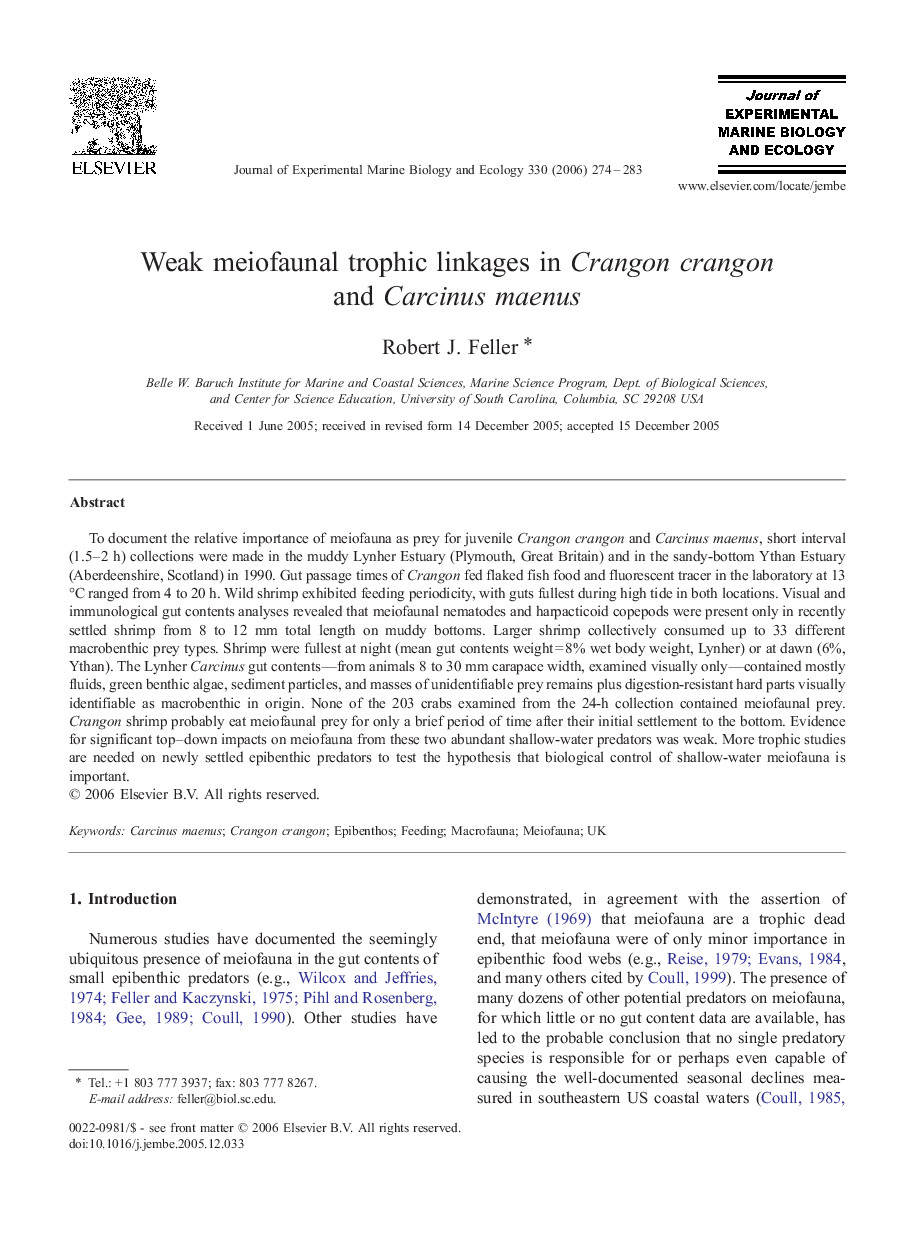| کد مقاله | کد نشریه | سال انتشار | مقاله انگلیسی | نسخه تمام متن |
|---|---|---|---|---|
| 4398224 | 1305932 | 2006 | 10 صفحه PDF | دانلود رایگان |

To document the relative importance of meiofauna as prey for juvenile Crangon crangon and Carcinus maenus, short interval (1.5–2 h) collections were made in the muddy Lynher Estuary (Plymouth, Great Britain) and in the sandy-bottom Ythan Estuary (Aberdeenshire, Scotland) in 1990. Gut passage times of Crangon fed flaked fish food and fluorescent tracer in the laboratory at 13 °C ranged from 4 to 20 h. Wild shrimp exhibited feeding periodicity, with guts fullest during high tide in both locations. Visual and immunological gut contents analyses revealed that meiofaunal nematodes and harpacticoid copepods were present only in recently settled shrimp from 8 to 12 mm total length on muddy bottoms. Larger shrimp collectively consumed up to 33 different macrobenthic prey types. Shrimp were fullest at night (mean gut contents weight = 8% wet body weight, Lynher) or at dawn (6%, Ythan). The Lynher Carcinus gut contents—from animals 8 to 30 mm carapace width, examined visually only—contained mostly fluids, green benthic algae, sediment particles, and masses of unidentifiable prey remains plus digestion-resistant hard parts visually identifiable as macrobenthic in origin. None of the 203 crabs examined from the 24-h collection contained meiofaunal prey. Crangon shrimp probably eat meiofaunal prey for only a brief period of time after their initial settlement to the bottom. Evidence for significant top–down impacts on meiofauna from these two abundant shallow-water predators was weak. More trophic studies are needed on newly settled epibenthic predators to test the hypothesis that biological control of shallow-water meiofauna is important.
Journal: Journal of Experimental Marine Biology and Ecology - Volume 330, Issue 1, 7 March 2006, Pages 274–283